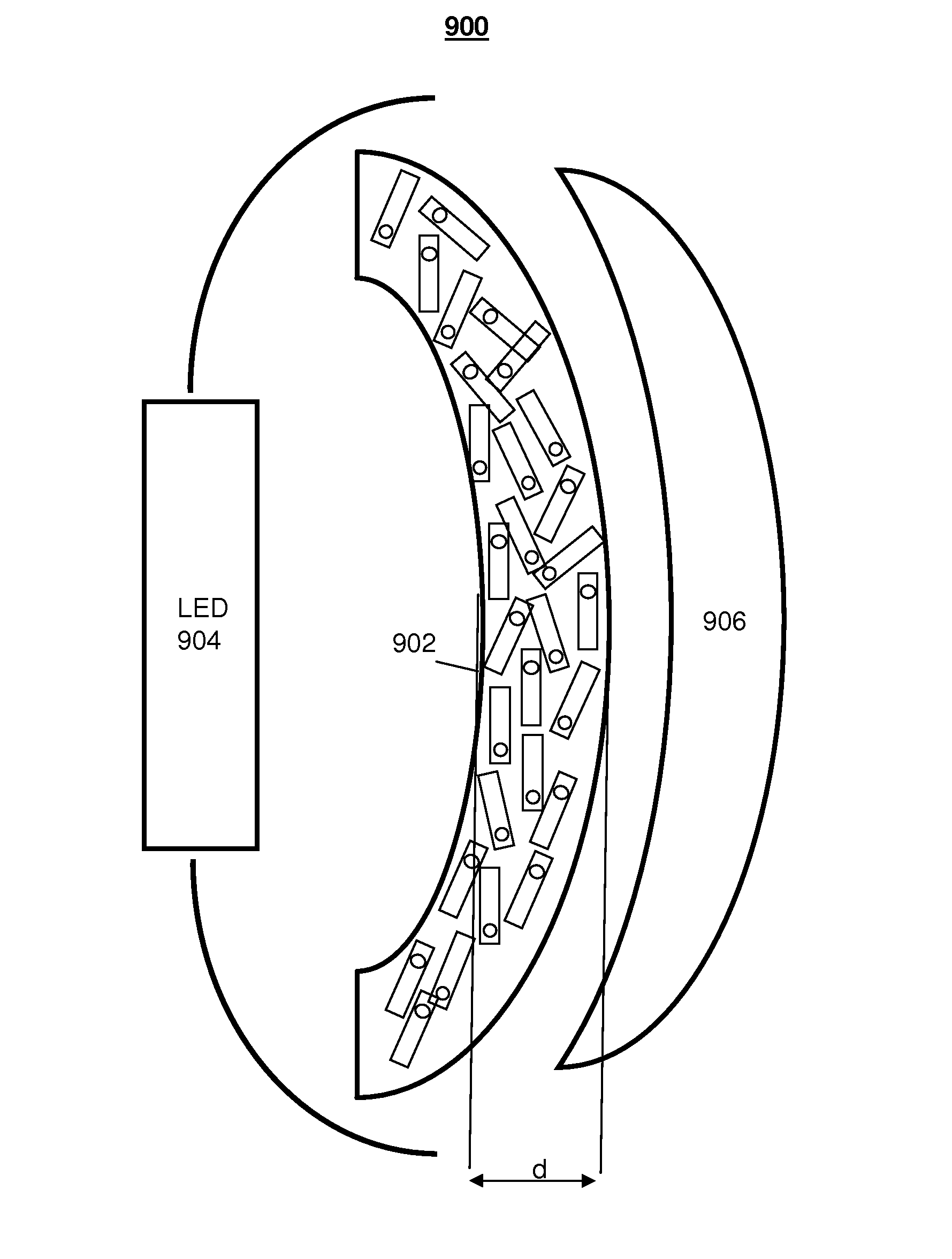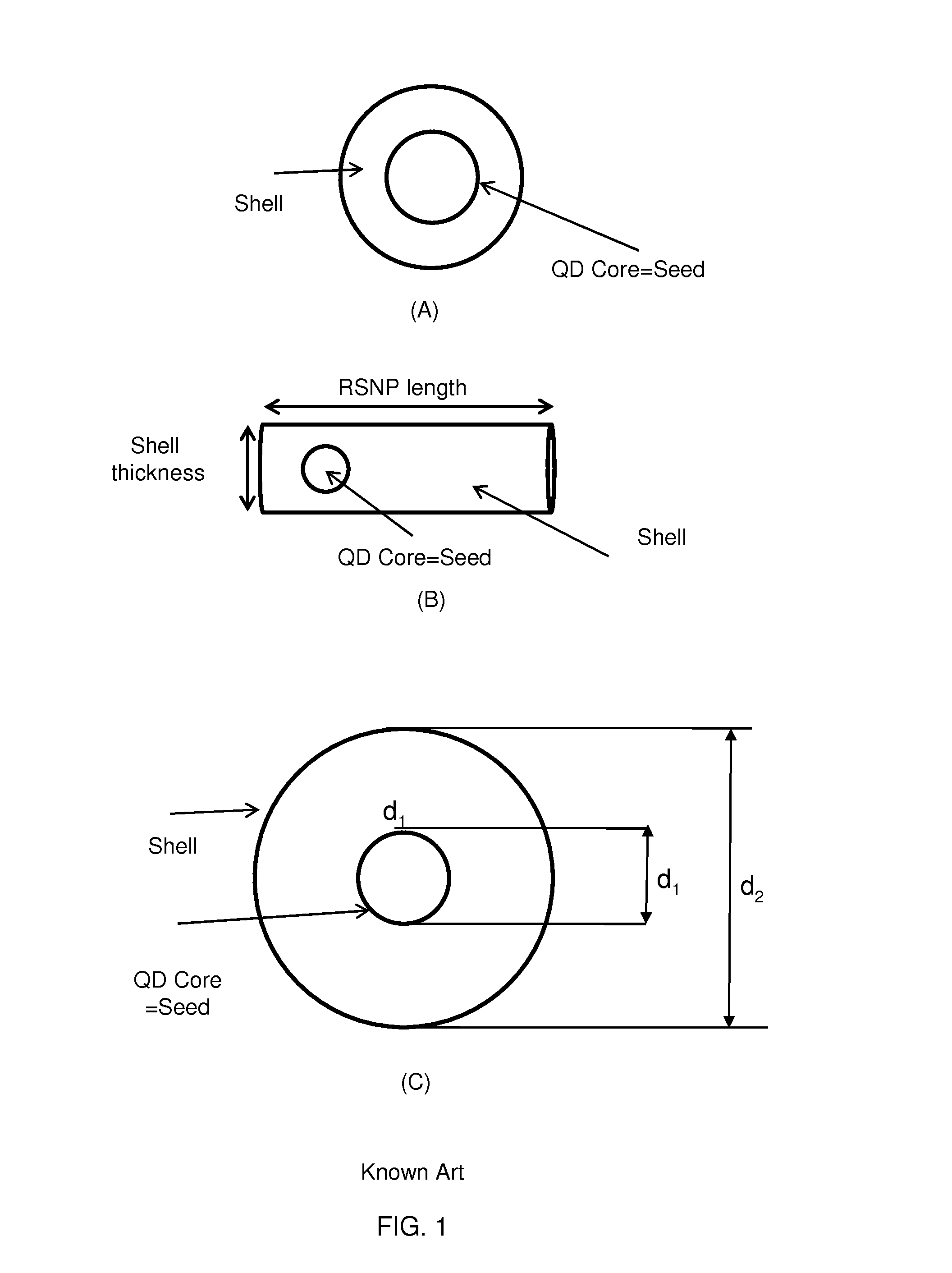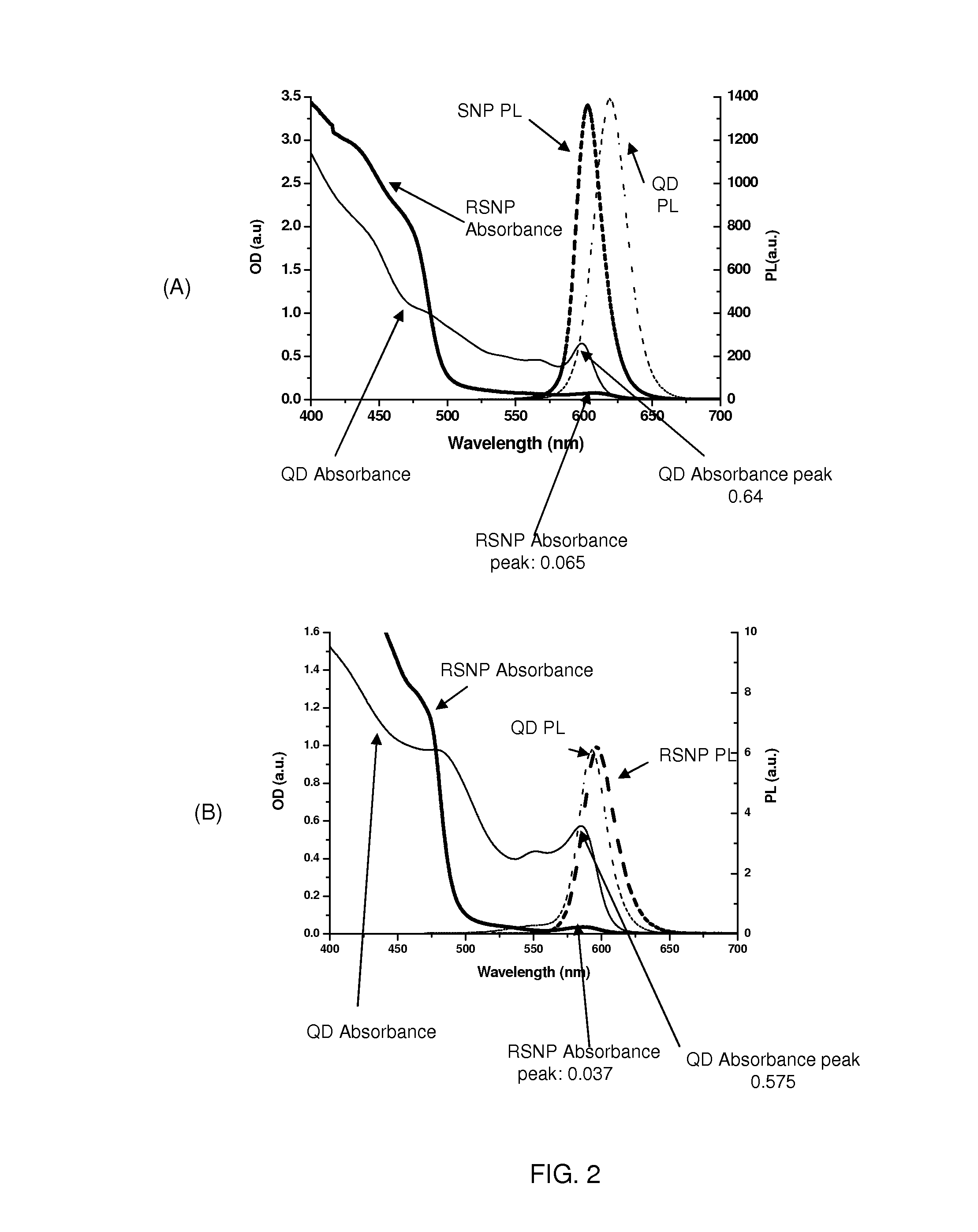Lighting devices with prescribed colour emission
a technology of colour emission and light source, applied in the field of optical devices, can solve the problems of inability to generate white light using a conventional led, difficulty in converting layers based on qds, and difficulty in generating white light, so as to avoid losses and deficiencies, improve the emission spectrum, and minimize energy loss.
- Summary
- Abstract
- Description
- Claims
- Application Information
AI Technical Summary
Benefits of technology
Problems solved by technology
Method used
Image
Examples
example 2
Lighting Device with Diffusive RSNP Conversion Layer Within Polymer Host Providing Combination of Blue and Red Light
[0071]A diffusive RSNP layer was prepared using the procedure in Example 1, with a modification that 1.3 mg of RSNP was dissolved in 1 ml Toluene and that after the 10 minutes stirring of RSNPs in polymer, 5 mg of BaSO4 particles were added to the solution and stirred for another 15 minutes. The resulting film had diffusive properties that enhanced the optical emission and increased the extraction of the light in a required direction.
[0072]The RSNP layer was incorporated in a lighting device as shown in FIG. 5B. A blue LED emitting at 455 nm was used to illuminate the RSNP layer. The lighting output was measured and the light spectrum is presented in FIG. 12A, which shows a combination of a blue remnant from the blue LED and a red component from the RSNP conversion layer.
example 3
Lighting Device with RSNP Conversion Layer Within Silicone RTV Providing Combination of Blue and Red Light
[0073]A RSNP layer in Silicone RTV was prepared as follows: 1 g of RTV615A (Momentive, 22 Corporate Woods Boulevard, Albany, N.Y. 12211 USA) was stirred with 0.1 g of RTV615B for 10 min. 1.5 mg of CdSe / CdS RSNPs with overall dimensions of 27×5.5 nm emitting at 635 nm was dissolved in 250 μl Toluene. The RSNP solution was added to the silicone mixture while stiffing, then vacuumed until no bubbles remained. The solution was then deposited on a glass substrate and sandwiched using another glass substrate. 600 μm-thick spacers were positioned between the two glass substrates to obtain the desired film thickness. The sandwiched structure was then placed on a hot plate at 150° C. for 15 minutes, after which the solution became solid. The measured film thickness was 600 μm.
[0074]The RSNP layer was incorporated in a lighting device as shown in FIG. 5B. A blue LED emitting at 455 nm was...
example 4
Lighting Device with Thin Dense Spin-Coated RSNP Conversion Layer Providing Red Light
[0075]A dense RSNP layer was prepared as follows: first prepared was a solution of 35×5.4 nm CdSe / CdS RSNPs, emitting at 635 nm, in Toluene with 1:4 weight / volume (mg / μL) ratio. 20 μL of the solution was drop cast on a soda lime glass substrate and spread by spin coating at 2000 rpm. The deposited film was measured to have an absorbance OD of 0.51 at 455 nm, and OD of 0.9 at 360 nm. The thickness was 0.510 um as measured by a profilometer. FIG. 13A shows the absorption (dotted line) and the PL (full line) spectra of this RSNP layer. The emission maximum is at 633 nm, with a FWHM of 33 nm. The absorption OD is 0.96 at 360 nm, 0.5 at 455 nm, 0.035 at 540 nm and 0.025 at 600-750 nm, the latter 20 times smaller than the OD at 455 nm.
[0076]The RSNP layer was incorporated in a lighting device as shown in FIG. 5A A UV LED at 360 nm was used to illuminate the RSNP layer, and provided light output in the red...
PUM
| Property | Measurement | Unit |
|---|---|---|
| central emission wavelength | aaaaa | aaaaa |
| central emission wavelength | aaaaa | aaaaa |
| central emission wavelength | aaaaa | aaaaa |
Abstract
Description
Claims
Application Information
 Login to View More
Login to View More - R&D
- Intellectual Property
- Life Sciences
- Materials
- Tech Scout
- Unparalleled Data Quality
- Higher Quality Content
- 60% Fewer Hallucinations
Browse by: Latest US Patents, China's latest patents, Technical Efficacy Thesaurus, Application Domain, Technology Topic, Popular Technical Reports.
© 2025 PatSnap. All rights reserved.Legal|Privacy policy|Modern Slavery Act Transparency Statement|Sitemap|About US| Contact US: help@patsnap.com



